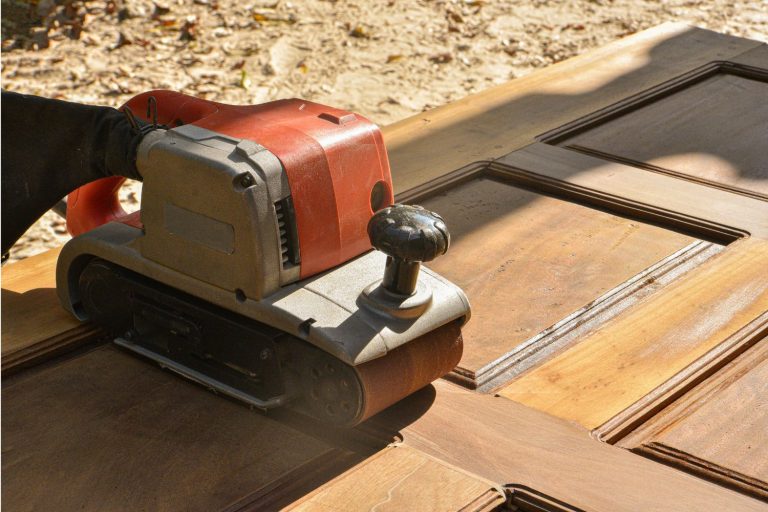Backyard Oasis – Find the Best Sander for Deck Renewal
Are you looking to turn your backyard into an oasis with a newly-refinished deck?
With the right tools and a little know-how, it doesn’t have to be intimidating.
One of the most important steps in giving your deck a facelift is sourcing and securing the best sander possible.
Whether you’re tackling this project as a DIYer, contractor, or professional tradesman, having quality equipment that makes refinishing smooth and seamless can take your hardscape from worn out to stunning in no time!
Read on for everything you need to learn about choosing the perfect sander for completing your dreamy backyard upgrade.
Do you have other sanding projects around the house?
Check out our reviews of the best sanders for furniture refinishing and the best sanders for cabinets!

How We Choose the Best Sanders for Deck Refinishing
Sanding your deck is a huge job, and you want to make sure you’re using the right tool for the job.
With so many types of sanders available, it can be overwhelming to determine which one is the best fit for your needs.
We’ve read through thousands of reviews on Amazon to find the 4 best sanders for deck refinishing.
Whether you’re looking for belt sanders or random orbital sanders, we’ve got you covered.
Best 6-Inch Random Orbit Sander
BOSCH GEX34-6N 6 In. Random Orbit Sander
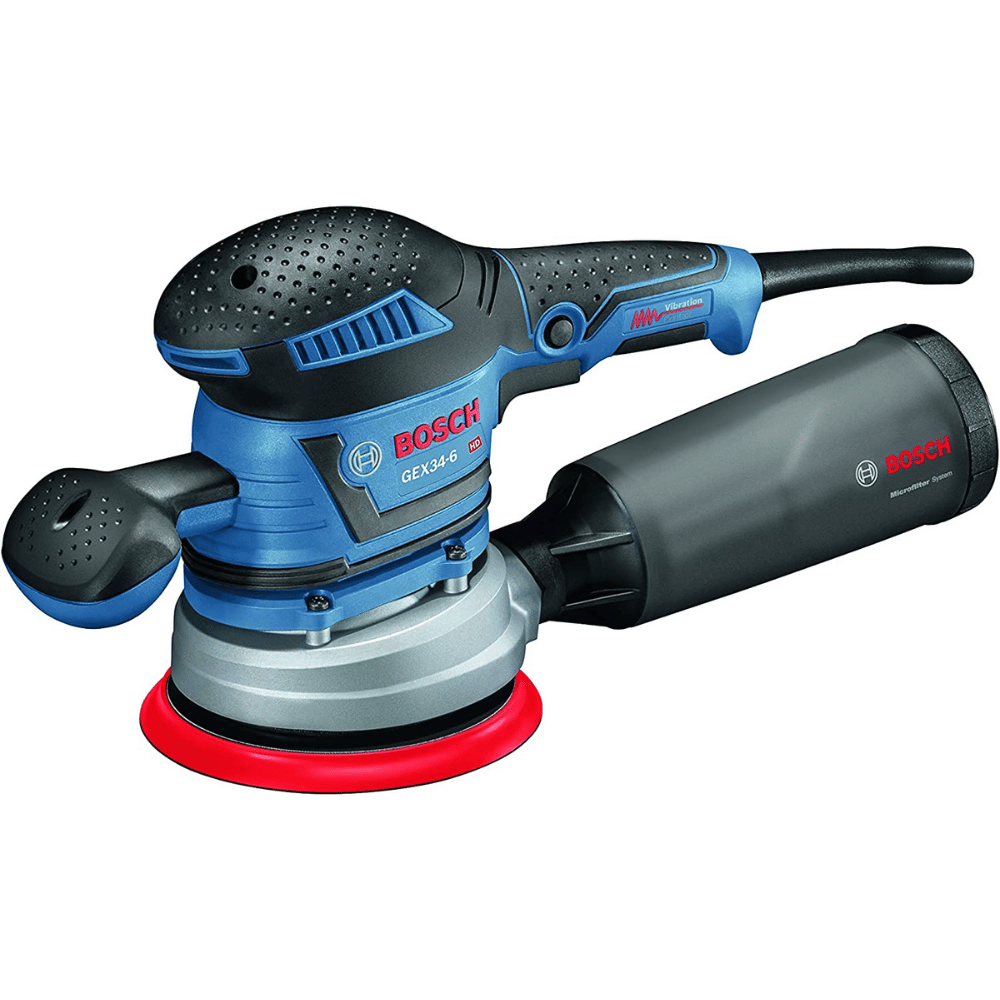
Key Features
- 6-Inch sanding pad
- 3.4 amp motor
- Variable speed settings – 5,500 to 12,000 orbits per minute (OPM)
Why It’s a Great Choice
The BOSCH GEX34-6N 6 In. Random Orbit Sander offers unbeatable performance for any DIY deck sanding.
The Vibration Control and Pad-Dampening System provide smooth operation and top-notch results with every use.
Plus, the aluminum gear housing comes equipped with a variable speed dial to set the perfect speed for any sanding challenge.
The microfilter dust system captures dust particles most systems miss during the sanding process while multiple grip positions allow you to work comfortably horizontally and vertically.
With the efficient hook & loop disc attachment system changing discs is effortless and hassle-free.
Experience all of these professional-grade features in one ergonomically designed high-quality sander that only weighs 5.3 lbs – an essential tool for any respectable DIYer!
With the BOSCH GEX34-6N 6 In. Random Orbit Sander, you can be sure you’ll have the tools needed for your next masterpiece project!
Best Variable Speed Random Orbit Sander
DEWALT Random Orbit Sander, Variable Speed, 5-Inch (DWE6423)

Key Features
- 5-Inch sanding pad
- 3.0 amp motor
- Variable speed settings – 8,000 – 12,000 OPM
Why It’s a Great Choice
When it comes to deck refinishing, this DEWALT Random Orbit Sander will help you get the job done quickly and effectively.
This 5-inch sander has been designed for improved comfort, with a separate counterweight that reduces vibration and a shorter height that allows you to get closer to the workpiece.
An improved dust-sealed switch protects against dust ingestion for longer switch life, while the rubber overmold improves grip in all of the critical areas of the sander.
Plus, it perfectly combines with our one-handed locking dust bag for improved dust collection.
Don’t miss out on this durable DEWALT Random Orbit Sander if you’re searching for a powerful sander that can tackle even your most difficult deck sanding projects!
Best Belt Sander Overall
Makita 9403 4″ x 24″ Belt Sander
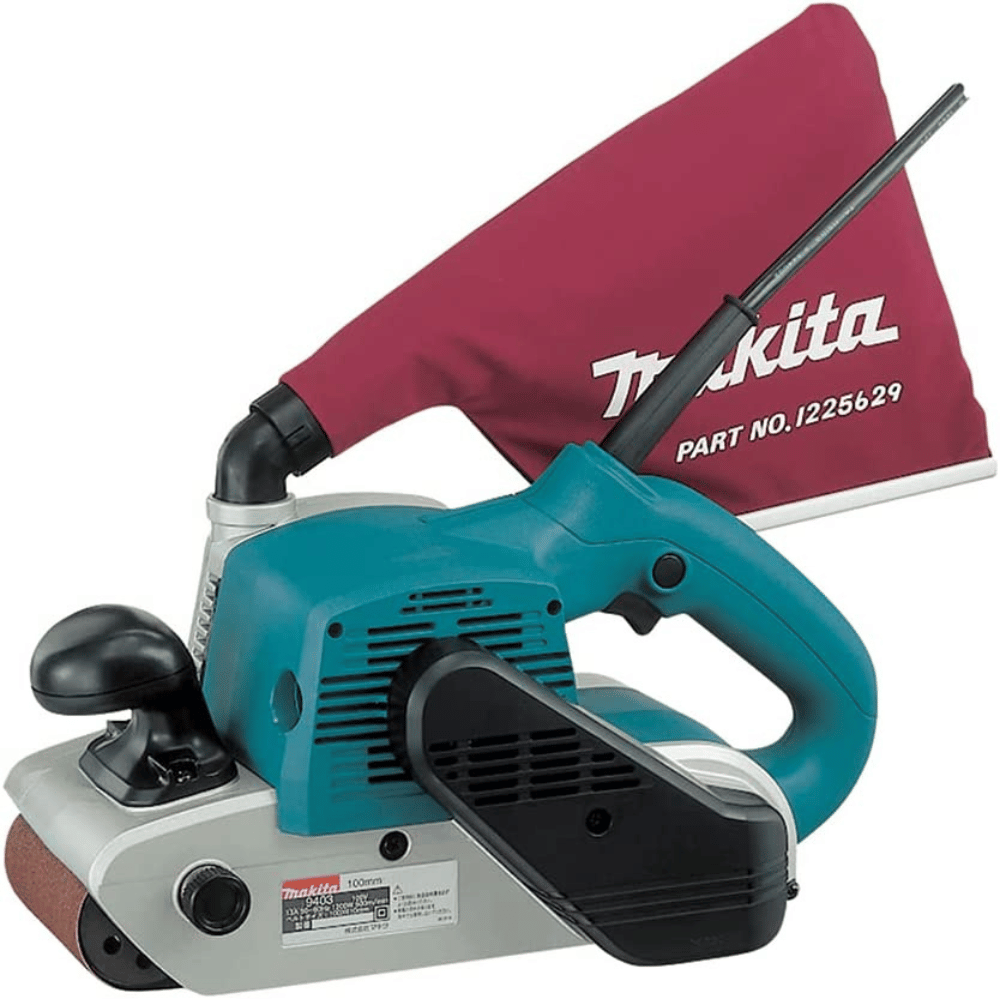
Key Features
- 4-Inch wide belt
- 11 amp motor
- Electronic speed control – 1,640 ft/min
Why It’s a Great Choice
The Makita Belt Sander is ideal for sanding decks.
This cutting-edge sander is ready to take your project to the next level.
With a speed of 1,640 ft./min., you’ll get fast material removal—all while keeping the noise down to 84dB, making it one of the quietest belt sanders out there.
Additionally, this belt sander features a large front grip which is conveniently positioned for ease of use.
Plus, its labyrinth construction seals and protects the motor and bearings from dust and debris so that you can extend the life of your tool.
Last but not least, the innovative design of the side and nose allows you to sand flush to walls with precision and accuracy, giving you professional-looking results every time!
Get your deck project done quickly with great results with this Makita Sander.
Best Belt Sander on a Budget
CRAFTSMAN Belt Sander, 3-Inch x 21-Inch (CMEW213)
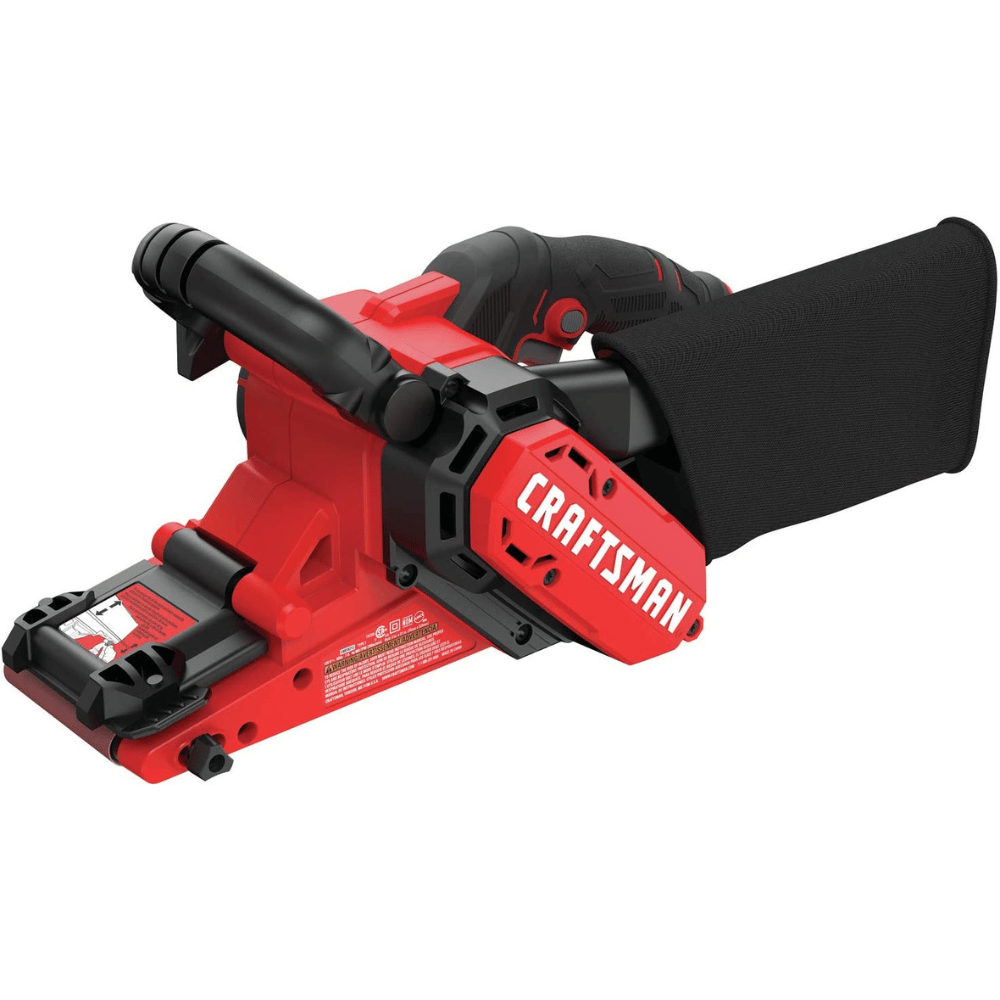
Key Features
- 3-Inch wide belt
- 7 amp motor
- Single speed – 800 ft/min
Why It’s a Great Choice
If you need a dependable belt sander to complete your next deck refinishing project, look no further than the CRAFTSMAN Belt Sander.
This compact and lightweight tool is designed with an angled belt system which allows you to sand closer to adjoining surfaces, giving you professional-looking results.
With a maximum of 800 feet per minute, you can blast through material quickly, making your refinishing project stress and hassle-free.
And, with its convenient tool-free belt release, changing out belts is quickly and easily done.
Plus, its high-performance dust collection featuring an onboard dust bag will help keep your workspace tidy and clean.
Finally, its three-position over-molded handle ensures optimal comfort during use so can make sure your deck looks great with less fatigue on your body.
For DIYers looking for an easy-to-use but powerful belt sander, the CRAFTSMAN Belt Sander is the best choice!
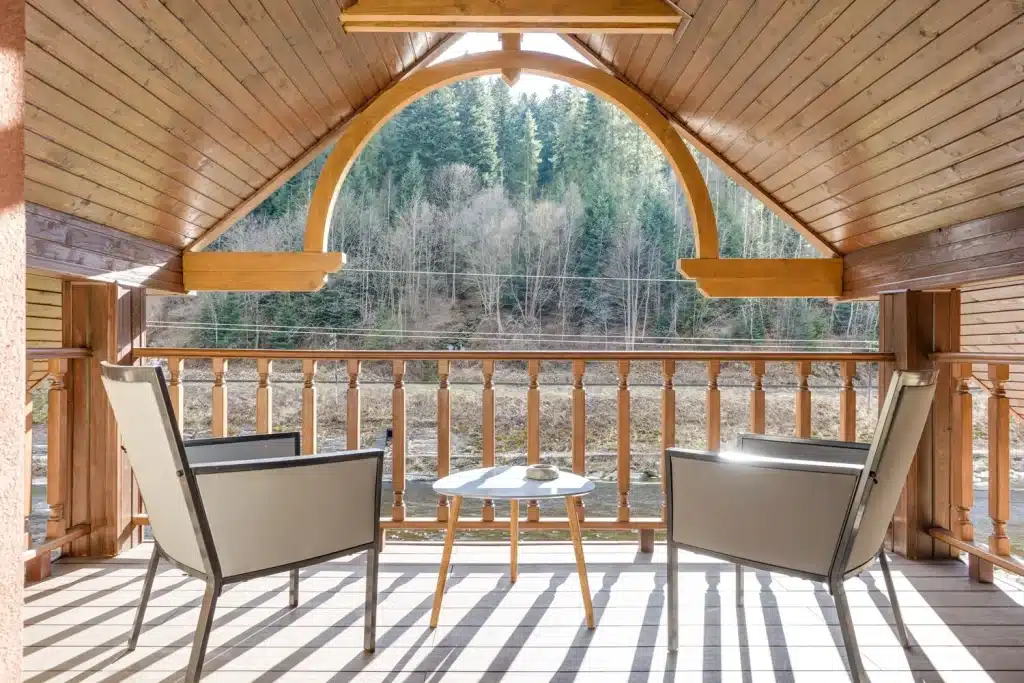
Buyer’s Guide to the Best Sanders for Deck Refinishing
Sanding your deck is a critical part of the refinishing process, but it can be difficult to know which sander is right for the job.
There are a lot of different deck sanders on the market, and it can be tough to figure out which one is right for you.
We’ve put together these FAQs to help make your decision easier.
Is it better to sand my deck or use a pressure washer?
When it comes to preparing your deck for refinishing or staining, both sanding and pressure washing can be effective methods. However, the best approach will depend on the condition of your deck and your specific needs.
Pressure washing can be a quick and efficient way to remove dirt, grime, and debris from the flat surfaces of your deck. It can also help remove old paint or stain that’s peeling or flaking. However, a pressure wash alone may not be enough to smooth out rough patches or remove stains that have penetrated deep into the wood of an old deck.
Sanding, on the other hand, can help smooth out rough spots and remove deeper stains by taking off a small layer of wood. Sanding is also a good option if you want to change the color of your deck since it removes any existing stain or paint completely.
In general, if your deck is in good condition with only surface-level dirt and debris, power washing may be all you need to prepare it for refinishing. But if there are deeper stains or rough patches that need smoothing out, sanding may be necessary.
It’s worth noting that a power washer can also cause damage to your deck if done improperly. Too much pressure or holding the spray nozzle too close to the surface can cause splintering or even gouging in the wood. Therefore, it’s important to use proper technique and start with low pressure before gradually increasing as needed. While it may save time over sanding, you’ll still be waiting some time for the wet deck to dry before you can move on to the next step.
Ultimately, whether you choose to sand your deck or use a power washer will depend on several factors including the condition of your deck and personal preference. Consulting with a professional contractor can help you determine which method is best suited for your specific needs while ensuring that your project is completed safely and efficiently while achieving professional-level results.
What is the best type of sander to use for deck sanding?
When it comes to wooden deck refinishing, choosing the right type of sander is crucial for achieving a smooth and even finish. While there are several types of sanders on the market, some are better suited for a deck refinishing project than others.
The best type of sander to use on your deck is a random orbital sander. This type of sander uses a circular sanding disc that rotates in an elliptical pattern, which helps prevent swirl marks and produces a consistent finish. Random orbital sanders also have variable speed settings, allowing you to adjust the speed based on the specific needs of your project.
Belt sanders may seem like a good choice for their aggressive sanding power, but they can quickly damage the wood if used improperly. Similarly, palm sanders are not recommended for large-scale projects like decks due to their small size and limited power. Large-size floor sanders are also not reasonable for deck wood as they work best on flat, smooth surfaces. A floor sander is difficult to use on a sanding surface with gaps and warping.
When selecting a random orbital sander for your deck sanding project, consider models with larger sanding discs (such as 6-inch or 7-inch) to cover more surface area in less time. Look for models with dust collection systems to minimize cleanup and reduce airborne debris.
Ultimately, the best sander for you will depend on your specific needs and preferences. However, by choosing a random orbital sander with a dust collection system and variable speed settings, you can ensure efficient and effective results while minimizing potential damage to wooden decks.
Should I choose a corded or cordless deck sander?
When it comes to choosing between a corded or cordless deck sander, there are several factors to consider.
Corded sanders are a popular choice for deck boards due to their consistent power supply and ability to handle large-scale projects. They also tend to be more affordable than their cordless counterparts. However, corded sanders require access to a power outlet and may limit your mobility while working on your deck.
Cordless sanders, on the other hand, offer unparalleled mobility and flexibility when working on your deck. They are ideal for smaller projects or areas that are difficult to reach with a power sander. Cordless sanders typically use rechargeable batteries, which can provide up to several hours of run time depending on the model.
When deciding between a corded or cordless sander for deck refinishing, consider the size and scope of your project. If you have a large deck that requires extensive sanding, a corded sander may be the better choice due to its constant power supply. However, if you only need to tackle small-scale projects or hard-to-reach areas of your deck, a cordless sander may be more practical.
It’s important to note that cordless sanders tend to be more expensive than their corded counterparts due to their battery technology. Additionally, some users may find that cordless sanders lack the same level of power as corded models.
Ultimately, whether you choose a corded or cordless sander for deck refinishing will depend on your specific needs and preferences. Consider factors such as project size, mobility requirements, and budget when making your decision.
How many sanding discs will I need to refinish my entire deck?
The number of sanding discs you will need to refinish your entire deck will depend on several factors, including the size of your deck, the type of sander you are using, and the condition of your wood.
As a general rule of thumb, you will need approximately one sanding disc for every 100 square feet of decking. For example, if you have a 500-square-foot deck, you can expect to use around five sanding discs.
However, this estimate is based on the assumption that your wood is in good condition and does not require extensive sanding. If your deck has significant wear and tear or damage, you may need to use more sanding discs to achieve a smooth and even finish.
Additionally, the type of sander you are using can impact how many sanding discs you will need. For example, random orbital sanders tend to require fewer sanding discs than belt sanders due to their ability to produce consistent results with each pass.
To determine how many sanding discs you will need for your specific project, it’s best to consult the manufacturer’s instructions for your sander and purchase additional discs as needed. It’s also a good idea to have extra sanding discs on hand in case any become worn or damaged during your project.
In summary, estimating the exact number of sanding discs required for deck refinishing can be challenging as it depends on several variables. However, by following general guidelines and consulting manufacturer instructions, you can ensure that you have enough supplies on hand for an efficient and effective refinishing project.
Is it necessary to use a specific type of sandpaper for deck refinishing?
When it comes to a sanding job like this, using the right type of sandpaper is crucial for achieving a smooth and even finish. While there are many different types and grits of sandpaper available, not all are suitable for use on decks.
For deck boards, it’s generally recommended to use a coarse sandpaper with a grit between 36 and 80 to remove any old coatings or stains from the wood. Once the old finish has been removed, you can switch to a finer grit sandpaper with a grit between 120-220 to achieve a smooth surface.
It’s important to note that not all sandpapers are created equal. Some sandpapers are designed for use on specific types of wood or surfaces, while others may wear out quickly or leave behind unwanted scratches.
When selecting sandpaper for your deck project, look for options that are specifically labeled as suitable for wood or deck surfaces. These types of sandpapers tend to be more durable and effective at removing old finishes without damaging the wood.
In addition, consider using high-quality brand-name sandpapers rather than cheaper alternatives. These products are often made with higher-quality materials and can provide better results in the long run.
Ultimately, using the right type of sandpaper is essential for achieving professional-looking results when refinishing your deck. By selecting appropriate grits and investing in quality products, you can ensure that your deck looks its best for years to come.
How long does it typically take to refinish a deck with a sander?
The amount of time it takes to refinish a deck using a sander can vary widely depending on several factors. These include the size of your deck, the condition of the wood, and the type of sander you are using.
As a general rule of thumb, you can expect it to take anywhere from one to three days to refinish a standard-sized deck with a sander. This estimate includes time for sanding, cleaning, and applying any necessary finishes or sealants.
However, keep in mind that this is just an estimate, and your actual timeline may be longer or shorter depending on your specific circumstances. For example, if your deck is particularly large or has extensive damage that requires significant sanding and repair work, it may take longer to complete.
The type of sander you use can also impact how long the project will take. Belt sanders tend to be faster than orbital sanders due to their larger surface area and more aggressive sanding action. However, belt sanders may leave behind unwanted scratches if not used carefully.
In addition to these factors, weather conditions can also impact how long it takes to refinish your deck with a sander. Rainy or humid weather can slow down the drying process and prolong the overall project timeline.
Ultimately, the amount of time it takes to refinish your deck with a sander will depend on several variables. To get a more accurate estimate for your specific project, consider consulting with professionals in the industry or reaching out to manufacturers for guidance on product usage and application times.
Will using an electric sander damage my wood deck in any way?
Using an electric sander on your wood deck can be an effective way to remove old finishes and prepare the surface for refinishing. However, if not used properly, a power sander can potentially damage your deck.
One of the main risks associated with using an electric sander on a wood deck is over-sanding. If you use too much pressure or spend too much time in one area, you can create deep grooves or scratches in the wood that may be difficult to repair.
In addition, some types of electric sanders may be too aggressive for use on certain types of wood. For example, belt sanders are generally more powerful than orbital sanders and may cause damage to softer woods like pine or cedar.
To minimize the risk of damage when using an electric sander on your deck, it’s important to choose the right type of sander for your specific needs. Orbital sanders are a good choice for most decks as they provide a gentler sanding action that is less likely to cause damage.
Overall, while there is some risk involved in using an electric sander on a wooden deck, with proper care and attention it can be a safe and effective way to prepare your deck for refinishing.
What safety precautions should I take when using a sander on my deck?
It’s important to take proper safety precautions to protect yourself and others while using an electric sander on your deck surface.
First and foremost, always wear appropriate personal protective equipment (PPE) when using a sander on your deck. This includes eye protection, such as safety glasses or goggles, and a dust mask to filter out any airborne particles.
Additionally, you should wear earplugs or earmuffs if you’re using a particularly loud sander. Prolonged exposure to loud noise can cause hearing damage over time, so it’s essential to protect your ears whenever possible.
When working with a sander, be sure to keep the cord away from the sanding area at all times. A damaged or frayed cord can pose a serious shock hazard and should be replaced immediately.
Finally, take frequent breaks when using a sander on your deck to prevent overheating both yourself and the tool itself. Overheated tools can malfunction or become damaged over time, which can lead to accidents or injuries down the line.
By following these simple safety precautions when using a sander on your deck, you can help ensure that your project is completed safely and efficiently.
Are there any features or specifications I should look for when choosing the best sander for my specific needs?
When choosing a sander for your specific needs, there are several features and specifications that you should consider to ensure that you get the best tool for the job.
First and foremost, you should consider the size of the sander. Larger sanders may be more powerful but can also be heavier and more difficult to maneuver. Smaller sanders may not have as much power but can be easier to use in tight spaces or on smaller projects.
You should also pay attention to the speed of the sander. Higher speeds can help you complete your project faster but may also increase the risk of damage if not used properly. Lower speeds can provide greater control but may take longer to get the job done.
The shape of the sanding pad is another factor to consider when choosing a sander. Rectangular pads are common on belt sanders and can cover larger areas quickly, while round pads are typically found on orbital sanders and provide greater precision in tight spaces.
Finally, you should look for a sander with a comfortable grip and ergonomic design. This will help reduce fatigue during extended use and allow you to work more efficiently overall.
By considering these features and specifications when choosing a sander for your specific needs, you can select a tool that will help you complete your project safely and efficiently while achieving professional-level results.
Can I use the same sander on both the horizontal and vertical surfaces of my deck?
Using the same sander on both horizontal and vertical surfaces of your deck is generally possible, but it may not always be the most efficient or effective approach.
When sanding a horizontal surface, such as a deck board, using a belt sander with a large sanding belt can help you cover more ground quickly. However, when working on vertical surfaces like railings or posts, an orbital sander with a smaller pad may be more effective at providing the precision and control needed to achieve a smooth finish.
It’s also important to consider the grit of the sandpaper you’re using when sanding different surfaces. A coarser grit may be appropriate for rougher horizontal surfaces while a finer grit may be better suited for smoother vertical surfaces.
If you do choose to use the same sander on both horizontal and vertical surfaces of your deck, make sure to adjust your technique accordingly. When working on horizontal surfaces, move the sander in long strokes along the grain of the wood. On vertical surfaces, use shorter strokes and work in sections to prevent uneven wear and tear on the sandpaper.
Ultimately, it’s up to personal preference and comfort level whether you choose to use one sander for both types of surfaces or switch between different tools as needed. Just remember that taking care to select the right tool and technique can help ensure that your project is completed safely and efficiently while achieving professional-level results.
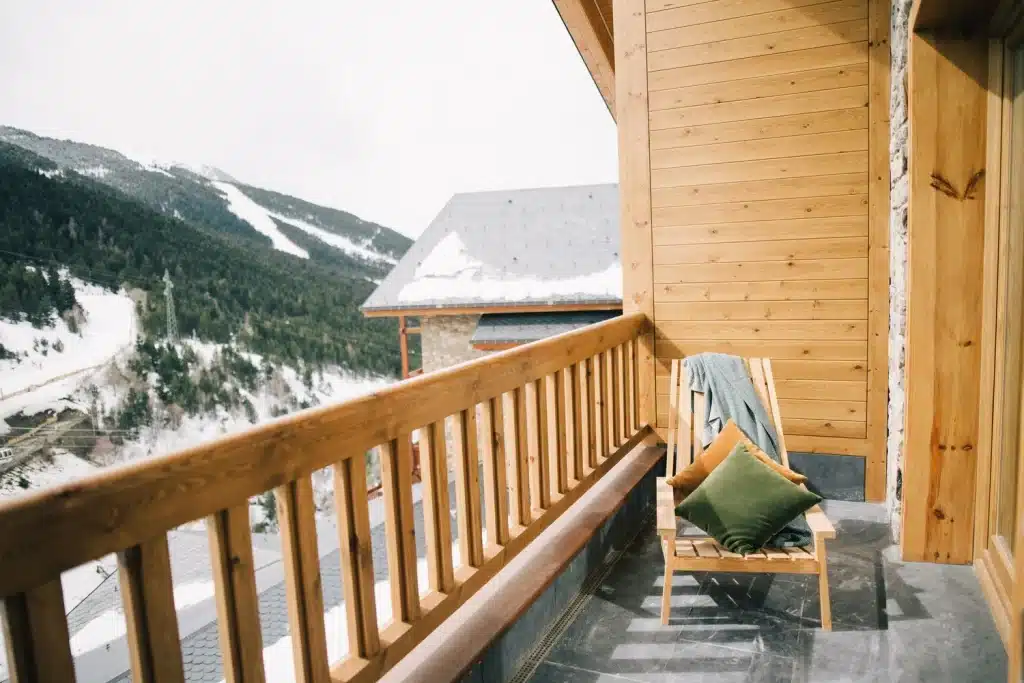
Choosing the Best Sander for Deck Sanding
If you’re like most people, your deck has been neglected for far too long.
But with the right sander, it can be transformed into an outdoor oasis that you and your family will enjoy for years to come.
We’ve read thousands of reviews on Amazon to find the best sanders for the job, and we’ve brought them all here together for you.
So what are you waiting for? Check the prices on Amazon and order yours now!


